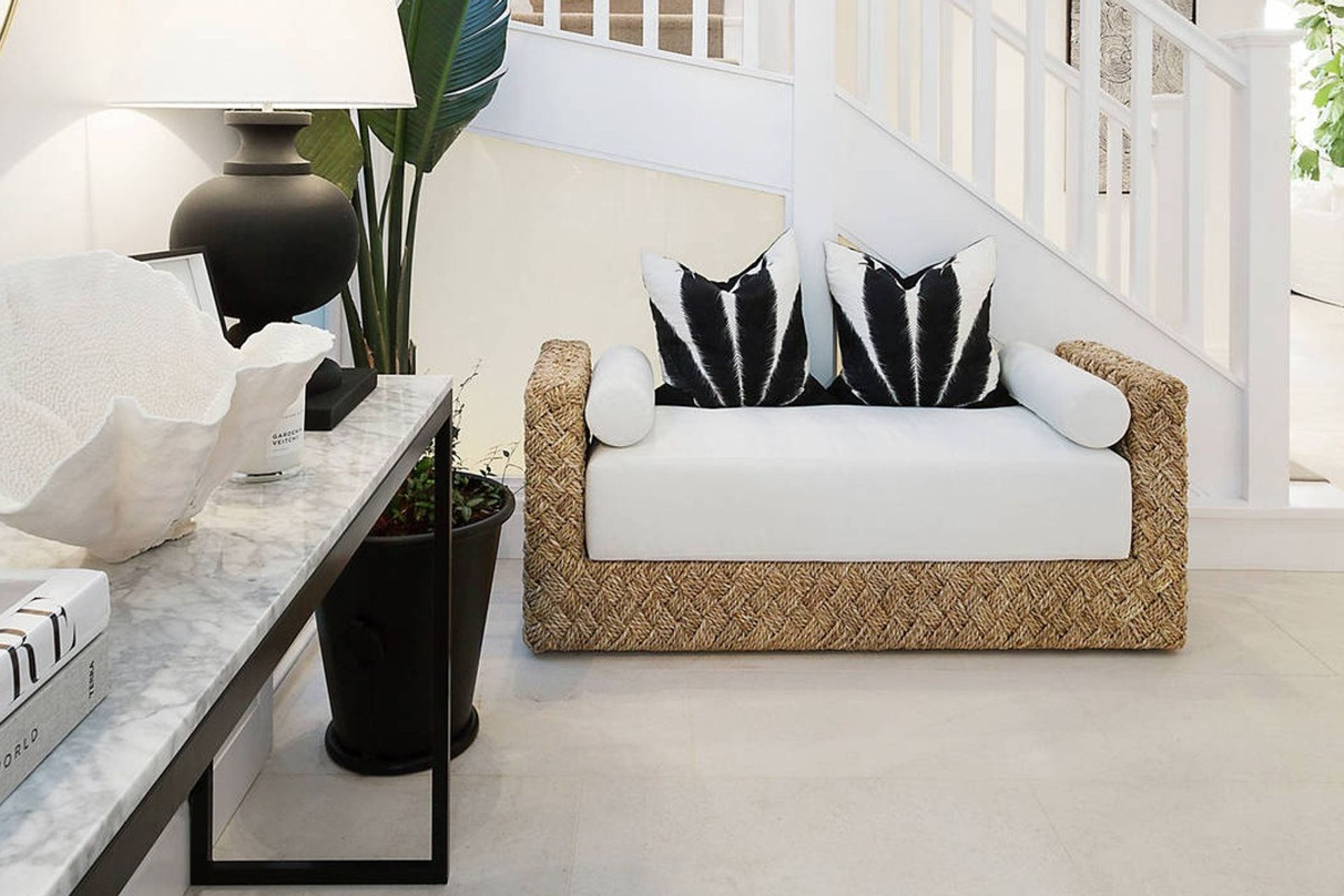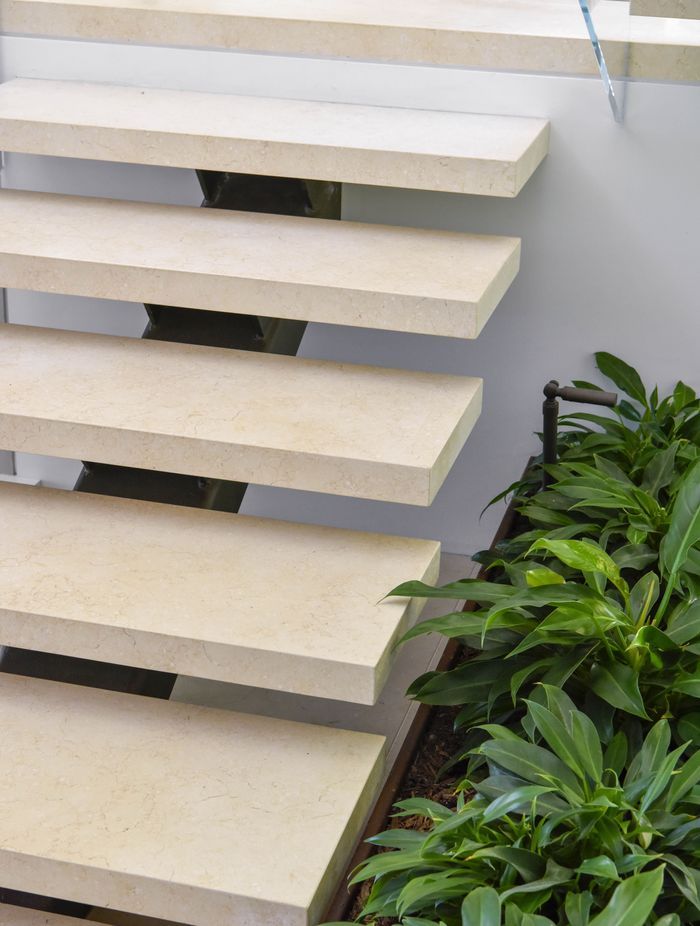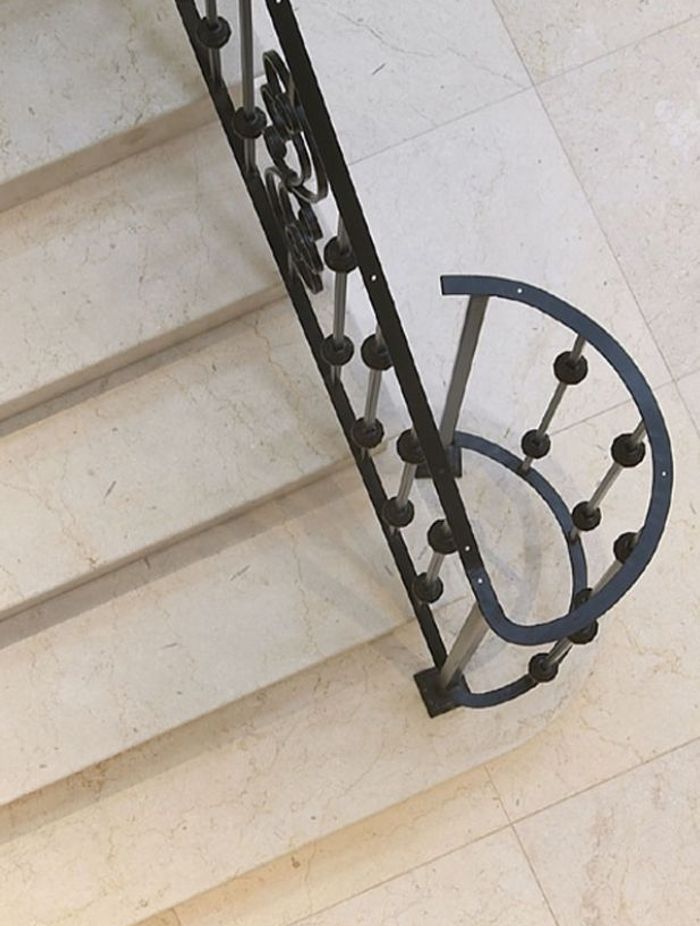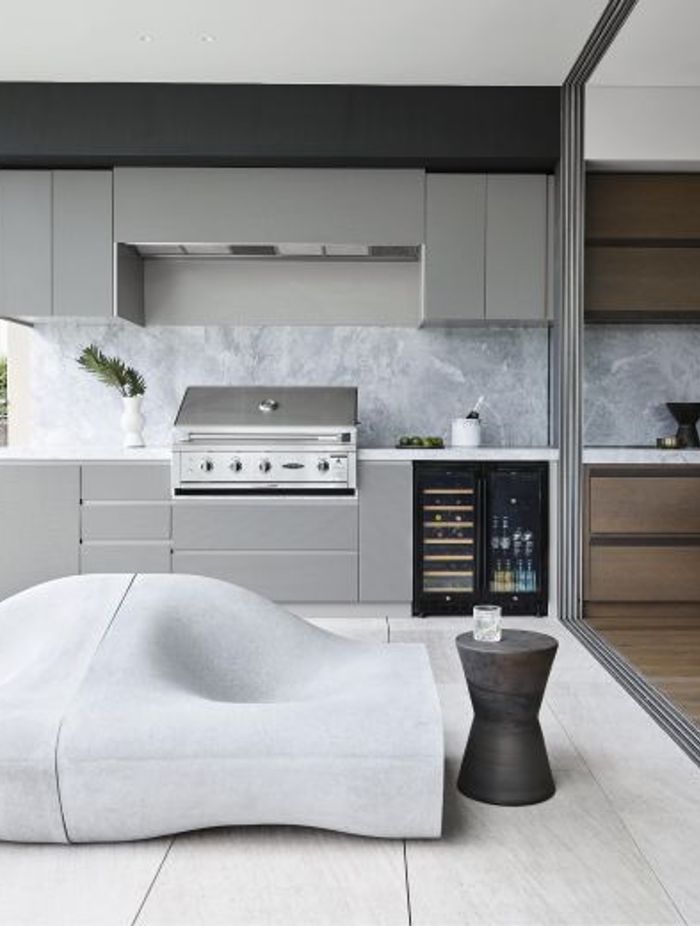Natural Stone Finishes 101
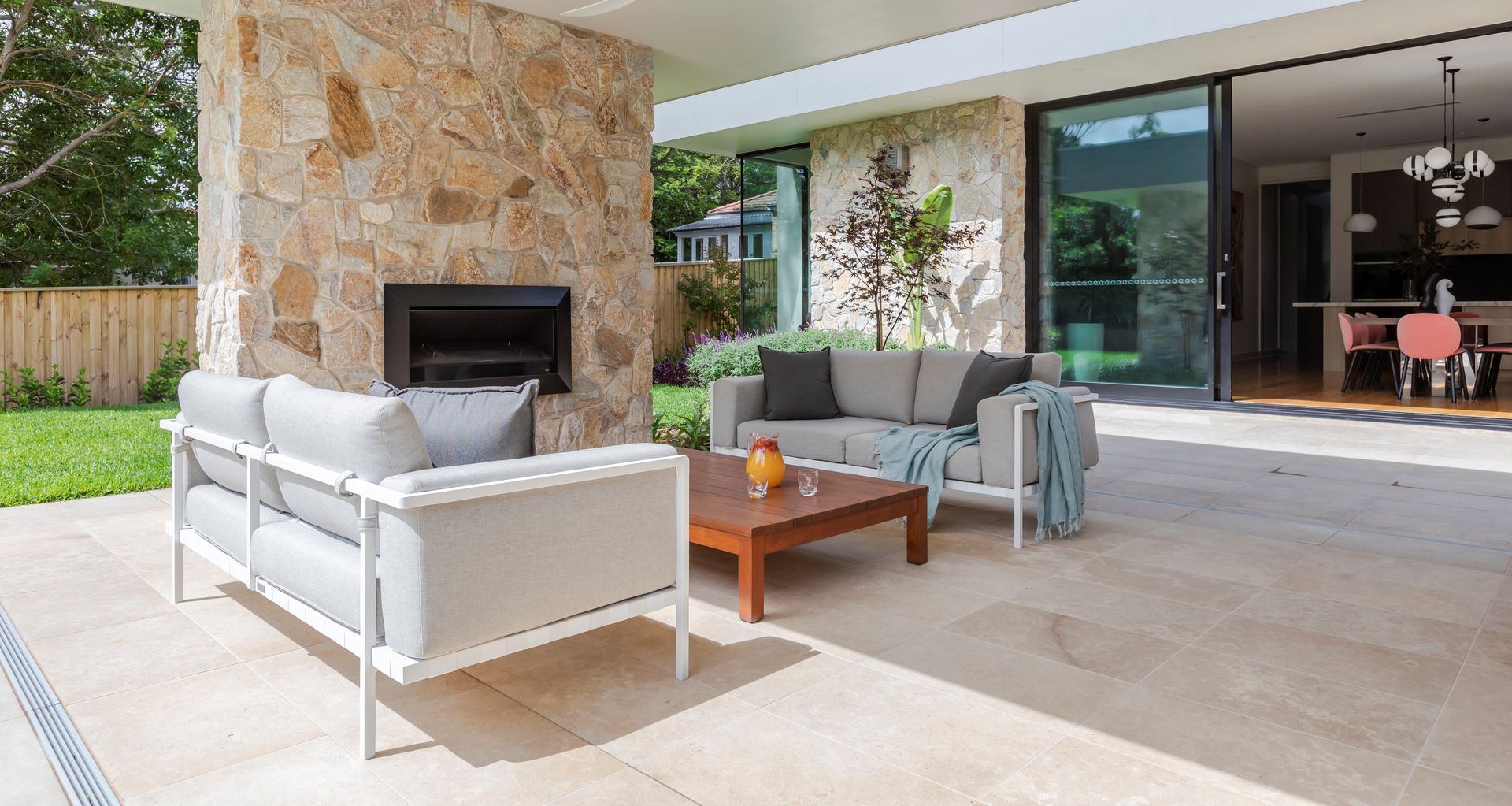
Choosing Your Natural Stone
When selecting natural stone for your project, consideration and understanding of the product and surface finish are paramount, as this will determine the most suitable option to use.
- Is the stone for a residential or commercial project?
- Is the stone for an interior living space, bathroom, alfresco area, or pool surround?
- Is the area high-traffic?
- What do all the different finishes mean?
- How do the different finishes affect the surface, the colour and the slip rating of the stone?
- What stones can be used and where?
Factors to Consider
When determining the material and surface finish of the natural stone, the following six factors will determine your selection.
1. Place Of Application
The place of application is crucial when selecting a suitable natural stone finish. Always check with your natural stone supplier that the stone and finish selected are suitable for your project.
Therefore, for products for outdoor areas, you would consider our alfresco, flamed, or tumbled finish rather than a honed finish, which is suitable for indoors.
2. Safety
In spaces that are likely to get wet, such as areas around the pool or bathroom floors, select the natural stone finish with slip resistance that will enhance the safety of the environment.
3. Regulations
On top of the slip resistance recommended for certain areas, when selecting natural stone for your project, ensure that your builder, tiler, and installer follow the Australian Standards.
Refer to the Australian Standards website for detailed information.
4. Textures
The processes applied to the stone’s surface don’t only affect the anti-slip properties but also the resulting texture. The different finishes suitable for outdoor use, such as alfresco, flamed, and sandblasted, come with varying textures.
Depending on your preference, selecting between different finishes suitable for outdoor use, such as alfresco, flamed, and sandblasted, will be determined by the stone’s texture.
5. Look and Feel
When two finishes offer similar anti-slip properties, they might differ in how they look and feel, as is the case when comparing the honed (matte) and polished (glossy) finishes.
While the honed or polished finish will look premium when used on the walls of a hotel lobby, the matte look of the honed finish might be preferred on the floor, which will be exposed to foot traffic, in either commercial or residential projects.
6. Maintenance
When caring for natural stone, it is crucial to select suitable high-quality sealers and cleaners that will ensure that your stone is protected and stays beautiful.
People often assume that natural stone is “stain-proof,” however all stone is porous to some degree. If not properly treated with a protective sealer, then water, oils or other liquids can easily penetrate the stone, leaving behind unwanted stains.
Some sealers can enhance (darken) your stone while others retain the stone’s natural hue. Also, different stone types require different grades of sealer depending on what you will be using your stone for and what you want your stone to look like.
Once natural stone is properly sealed, it’s protected from everyday spills. Instead of being absorbed into the stone, they will bead on the surface. When cleaning these messes, it’s equally important to use cleaners specifically formulated for stone.
Always use a neutral, pH-balanced cleaner, specially formulated for stone. Spills need to be attended to immediately to minimise permanent damage to the stone.
Natural Stone Finishes
Why is it important to understand the different finishes available, that are suitable for your project?
There are many processes used to create the different finishes on natural stone, and these will determine the surface properties of the stone.
Factors include:
- Texture, appearance and feel;
- colour – the same natural stone can look much lighter in colour in an alfresco finish, and darker in the honed finish;
- slip rating – outdoor areas require different finishes to ensure the appropriate slip rating is met;
- what maintenance is required?
The finish will also depend on the material, such as limestone, travertine, granite, or marble, as to which finishing process will produce the desired result.
Slip Rating
A Slip Rating determines the slip resistance of a tile surface. Developed based on Australian Standards, these ratings assist in selecting tiles for projects where specific slip ratings are required.
Slip Ratings make it easy to understand whether a tile is appropriate for a particular area such as a bathroom, kitchen, outdoor area, or around a swimming pool.
The Australian Building Code and Australian Standards mandate that slip-rated flooring in residential buildings is required for stair nosing, stair landings and ramps.
When using tiles in a commercial setting, such as a shopping centre, hotel, office building, warehouse, or industrial building, slip ratings and regulations apply.
How Is Slip Rating Determined?
Slip Ratings are determined by conducting a Wet Pendulum Test which simulates a shoe sole striking wet tiles. The test measures frictional resistance. A higher number indicates a lower risk of slipping in this test.
A tile with a slip-resistance rating of P2-P3 is considered suitable for indoor floor covering, and a tile with a slip-resistance rating of P4 or P5 is commonly used outdoors or around pools.
All slip rating values mentioned within this article are guides only; the product’s final properties and slip rating will depend on processes and other variables.
Stone suppliers will be able to produce these details for their products upon request.
Types of Natural Stone Finishes
In the following section, we will run through the most common natural stone finishes, their characteristics, and their common uses.
Polished Stone Finish
The polishing process involves mechanically rubbing or polishing a natural stone surface until it is smooth and shiny. The polished stone finish can be applied to any type of natural stone, including Granite and Quartzite, and is mostly applied to Marble and Limestone.
Honed Stone Finish
A honed surface means that the stone has been machined resulting in a smooth, matt finish, suitable for internal floors and walls.
Stone with a honed finish has a low slip rating (usually P2-P3, depending on the stone and the processes it has gone through) suitable for interior use.
The matte look of the honed finish is a popular choice for both residential and commercial projects.
Filled Vs. Unfilled Travetine Stone Finish
Travertine is a stone with naturally occurring holes and is available in two distinct forms, filled and unfilled.
A filled tile has had its holes, puck marks, and voids filled with colour-matched grout. Following this treatment, the tile is sanded, resulting in a smooth and even surface. In comparison, natural holes remain exposed in unfilled travertine which retains its organic or aged, earthy appearance.
Selecting between the two variations depends on your preferred appearance. It is also important to remember that the smooth surface of the filled and honed Travertine tends to be easier to clean and would be more suitable for areas that need frequent maintenance, such as the bathroom.
Whereas the unfilled and honed Travertine is more often used outdoors.
Straight-Cut Vs. Cross-Cut Stone Finish
Tiles with straight-cut edges have been cut so that all sides have a straight edge, as the name suggests, providing a contemporary aesthetic.
To create a bevelled edge, tiles with straight-cut edges go through a machining process to create a small, chamfered edge on the top surface.
As a result, the stone gains another level of interest and dimension, and this process also helps safeguard the stone against chipping in transit.
Vein-Cut vs Cross-Cut
Vein-cut and cross-cut are two different ways of cutting stone, each resulting in a different appearance of the same material, predominantly used with Travertine and Marble.
Slabs or tiles, which are vein-cut are cut against the stone’s natural grain, showcasing its veining and linear lines for a dramatic look.
Slabs that have been cross-cut create a swirly or cloudy appearance. Cross-cut is commonly used for Travertine tiles.
Tumbled Stone Finish
Tumbled tiles look different from tiles that have been honed or polished. The surface of tumbled stone simulates age and wear and has a beautiful soft patina. Tumbled tiles have softly rounded-off edges.
To tumble natural stone tiles, they are placed into large open rounded machines resembling a top loader washing machine most commonly filled with pebbles. The machine vibrates, moving and rolling the tiles or pavers around, to create the tumbled finish.
Tumbled stone is versatile and can be used both indoors and out, with the slip rating ranging from P3 to P5, this varies if other processes, such as sandblasting, or acid-wash have been applied.
Tumbled stone is used in kitchens, bathrooms, living areas, outdoor spaces, and pool surrounds.
When talking about Tumbled stones such as Travertine, the stone is also unfilled, providing that “aged” organic look and feel.
Numerous types of stone can be given a tumbled finish. The thickness and density of the stone need to be considered when tumbling, to ensure the stone is durable enough to withstand the tumbling process.
The most common tumbled natural stones are Travertine, Limestone, Marble, Granite, and Quartzite.

Alfresco
Alfresco, as the name implies, is a term Sareen Stone use to describe products that have undergone a combination of different processes to make them suitable for outdoor use. Sareen Stone’s Alfresco range all have a P4 or P5 slip rating, making them the safest choice for outdoor areas.
Sareen Stone works closely with quarries to develop processes, which provide a unique finish and effect to their products.
Flamed or Exfoliated
As the name refers, the process of applying a hot torch flame to the surface of the stone exfoliates the top layers of the stone, creating a textured finish that has a high slip resistance, whilst providing a natural appearance.
During the process, the stone acquires a textured surface providing a naturally weathered stone look.
This process is used for hard and resistant natural stone, such as Granite and makes the material suitable for outdoor use, typically with the highest P5 slip rating.
Sandblasted
The sandblasted finish is created by applying a high-pressure stream of water mixed with sand to the stone’s surface. This process is also known as abrasive blasting.
Sandblasted stone surfaces look rough yet clean because of their uniform texture, reminiscent of sand dunes. The process creates a premium and elegant look.
This process usually removes the colour intensity of the stone and provides an anti-slip finish, usually with a P5 slip rating.
Natural
A natural finish refers to the absence of treatment on the stone. The stone is extracted from the quarry, then cut to the desired format, with the final look completely determined by the characteristics of the stone. This finish is suited to using it outdoors.
Waterjet
The waterjet or "hydro" finish is achieved by focusing a high-pressure jet of water across the face of the stone surface.
Abrasion breaks crystals and opens pores in the stone, eroding the surface and making the stone suitable for outdoor use.
Applying a waterjet finish to stone, produces a texture similar to a flamed finish, but is a gentler process and is less damaging to the stone. Used predominantly outdoors.
Split Face
A split face finish is achieved when the stone is cut by means of a guillotine fracturing the block to create the tiles. This method of forming the tiles results in a rocky, or slightly undulating surface, which works beautifully for making products like wall cladding.
Bush-Hammered
This highly textured finish works best for natural stone intended for outdoor projects like pavement or pathways, creating a perfect slip rating for pedestrian surfaces. This process can also be applied to concrete.
During the process, the stone is struck by a mechanical hammer, leaving small dents on the stone's surface. The outcome is determined by the hammer's size and quantity of points. As a result, the stone's surface is rough with a weathered texture, however, retains the colour of the stone.
Distressed
Applying a distressed finish to stone treats it in an abrasive way that deteriorates its natural surface to mimic aging and wearing.Distressing stone results in it having varying degrees of wear over its surface. Distressed stone is mostly used in outdoor areas.
Antiquated
Although various processes can be used to create the antiquated finish, in general, for smaller tiles, devices that resemble commercial washing machines are used, while bigger tiles can have their surface flamed first and then buffed with abrasives.
The antiquated finish gives the stone a weathered appearance and encourages additional weathering over time.
Sawn
This finish is produced by "sawing" the stone with a diamond blade. It creates a relatively even surface with markings caused by the saw blade.
The stone block is sawn into slabs using a diamond gang saw, diamond wire saw, or a block cutter. The sawing process results in the material's surface retaining some blade markings, however, it is ordinarily smooth after being sawn.
Stone with a sawn finish becomes lighter in colour and has a matte tone. It is generally used for alfresco areas, steps, paths, driveways, and patios.
Chiselled
During this process, the diamond teeth mill grinder is used perpendicular to the surface to achieve a typical flat profile. As the name implies, the chiselled finish is created by breaking the stone with a hammer and chisel.
Depending on the type of chisel used and the user's skill, the surface may be very rough, or the finish may be slightly uneven. Stone with this finish is suitable for outdoor use and creates a unique and exclusive touch to your space.
Acid-washed
Acid changes the appearance of the surface and changes the stone’s colour slightly or significantly, depending on the type of acid, the length of time it is applied, and the material.
Acid washing stone also results in an antique look like stone that has been water blasted. The process can also improve the slip rating of natural stone to make it suitable for outdoor use.
Disclaimer
Please note this information is provided in good faith and to the best of our knowledge and experience at the time of writing. Always check against the relevant Australian Standards for trade practices at the time of installation. In no way does this information replace the services of professionals in the industry. The best advice is to always seek the services of a qualified professional when purchasing and installing natural stone products.




